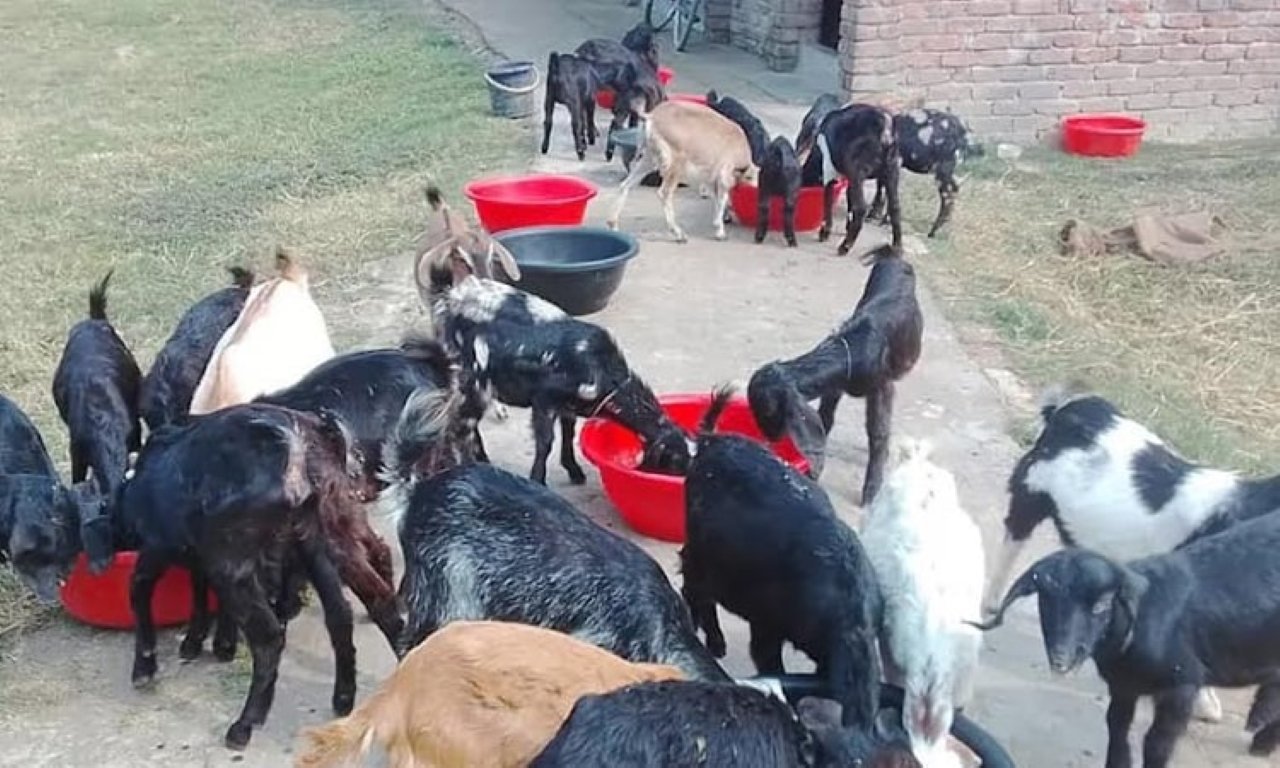RAJSHAHI, 12 April 2025 – Goat rearing is playing an increasingly vital role in strengthening the rural economy in Rajshahi, particularly among marginalised communities, as a growing number of families are turning to goat farming for sustainable livelihoods and improved living standards.
Revitalising Livelihoods in the Barind Region
In the drought-prone Barind tract and surrounding areas of Rajshahi district, goat farming has emerged as a beacon of hope for many rural families. With low capital investment and high returns, especially in comparison to other livestock, goat rearing is being embraced as a practical and profitable option.
According to the Rajshahi District Livestock Office, the number of goat-fattening farms has surpassed 100 units, while the total goat population has reached 5.26 lakh (526,000) this year – a notable rise of 1 lakh compared to the previous year.
| Year | Goat Population (in lakhs) |
|---|---|
| 2024 | 4.26 |
| 2025 | 5.26 |
| Growth | +1.00 lakh |
Black Bengal Goat: The Rural Champion
At the heart of this rural livestock boom is the Black Bengal goat, a native breed known for its adaptability, reproductive efficiency, and quality meat and leather.
Professor Jalal Sarder of the Department of Veterinary and Animal Sciences at Rajshahi University highlighted the breed’s advantages:
“The Black Bengal goat has a high reproduction rate, produces delicious meat, and its leather is of international standard. Its resilience in local climatic conditions makes it ideal for poverty alleviation.”
He further noted that many villagers now practise natural goat fattening methods using traditional feeds such as straw, molasses, oilcakes, black gram, green grass, and wheat bran—eschewing harmful chemical steroids or injections.
Empowering Rural Entrepreneurs
The transformative power of goat farming is evident in stories like that of Sohel Rana and Rima Khatun, a young graduate couple from Daulatpur village in Bagmara Upazila. After failing to secure government jobs, they turned to goat rearing seven years ago—and never looked back.
“This year we invested around Tk 2 lakh to buy 40 kids. We’ve already sold 8 goats for Tk 1.80 lakh and expect the remaining to fetch around Tk 4.50 lakh,” Sohel shared.
Support from NGOs and Government Initiatives
Organisations such as the Palli Karma Sahayak Foundation (PKSF), in collaboration with NGOs like Sataful Bangladesh, are offering vital financial and technical assistance to rural entrepreneurs.
Nazim Uddin Mollah, Executive Director of Sataful Bangladesh, stated:
“We are supporting small-scale goat farmers to become self-reliant through microloans, veterinary support, and hands-on training.”
The government is also playing an active role. Dr Atoar Rahman, Rajshahi District Livestock Officer, informed that seven public goat development farms across the country, including one in Rajshahi, have been modernised with enhanced infrastructure—featuring composting units, dipping baths, water systems, and farmer accommodations.
Rajshahi Goat Development Farm: A Model of Progress
Located in Rajabari, Godagari Upazila, the Rajshahi Goat Development Farm is a flagship centre driving the growth of goat farming in the region. Its objectives include:
Promoting Black Bengal goat farming
Empowering rural women entrepreneurs
Expanding training and breeding services
Encouraging bio-secure and sustainable livestock practices
Looking Ahead
Experts are urging policymakers to scale up training, spread awareness on scientific goat farming, and invest in breeding technologies to unlock the full potential of this sector.
With the right mix of community participation, policy support, and technological innovation, goat farming in Rajshahi is poised not only to lift families out of poverty but also to play a significant role in ensuring food security and economic stability in rural Bangladesh.
